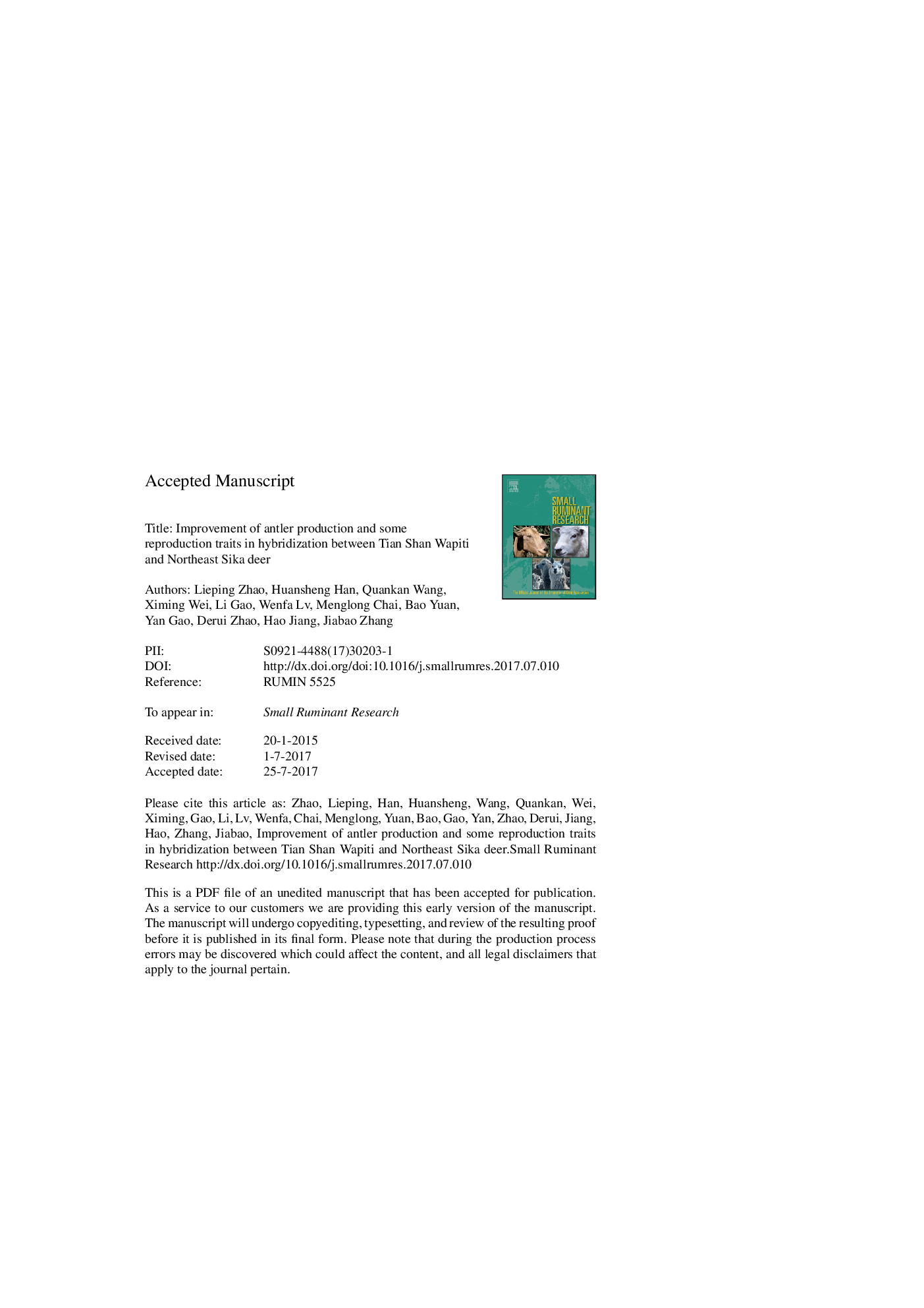| Article ID | Journal | Published Year | Pages | File Type |
|---|---|---|---|---|
| 5544208 | Small Ruminant Research | 2017 | 30 Pages |
Abstract
It is difficult to mate Sika does with Wapiti bucks due to differences in body size, estrus period and other environmental factors, although their hybrids have high economic value. In this study, we determined the optimal period of artificial insemination and analyzed specific assisted reproductive technologies to improve hybrid survival. Newborn and fawn hybrids showed strong vitality, particularly with respect to adaptability, stress resistance, growth rate, cold tolerance and gastrointestinal disease resistance. Hybrid deer displayed characteristics of both parents, provided more venison and exhibited more antler production than their female parents. The buck teasing method led to a higher conception rate than the estrus synchronization method. We determined that the optimal time to perform artificial insemination is from 14 to 18Â h after the doe has entered estrus. Does that were overweight both before and during pregnancy often experienced dystocia. By contrast, does that were underweight often birthed fawns with congenital dysplasia. Additional days of lactation significantly increased the growth rate, immunity, and weaning survival rate of fawns without delaying return to estrus for the doe. This research should help improve the production capacity and adaptation of international hybrid deer for market diversification.
Keywords
Related Topics
Life Sciences
Agricultural and Biological Sciences
Animal Science and Zoology
Authors
Lieping Zhao, Huansheng Han, Quankan Wang, Ximing Wei, Li Gao, Wenfa Lv, Menglong Chai, Bao Yuan, Yan Gao, Derui Zhao, Hao Jiang, Jiabao Zhang,
